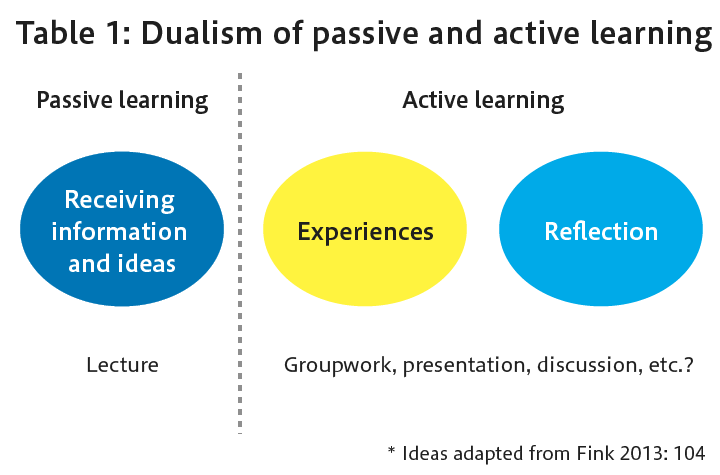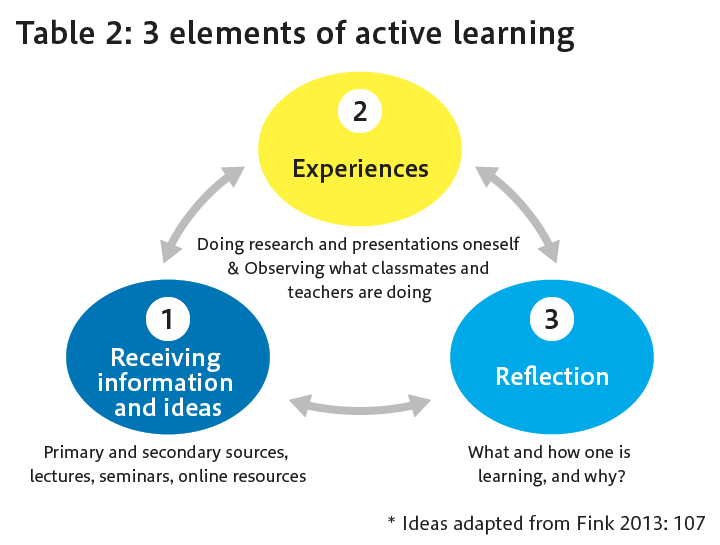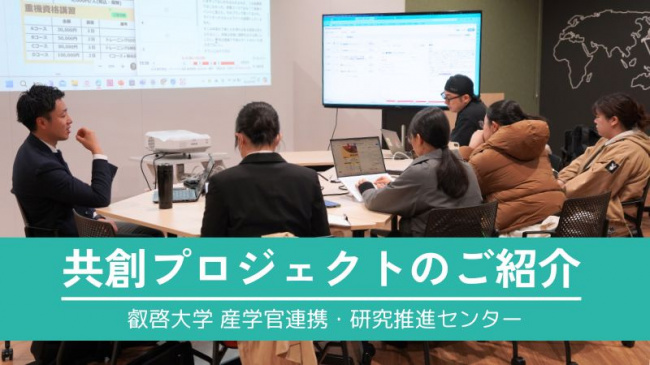 MEDIA
MEDIA

Active Learning at Eikei: What is active learning?
Eikei University uses active learning methods in all courses to develop studentsâ thinking abilities and practical skills for creating a better society.
This all sounds good, but what is active learning?
Does it mean participating in discussions and group projects instead of listening to lectures?
Let us share some basic ideas of active leaning and why we think it is so important.
Active leaning came out of the criticism of traditional university lectures, which had the form of one-directional delivery of knowledge from the teacher to a large number of students. Against this background, the term, âactive learning,â came to be used in North American higher education contexts since the 1980s, signifying a broad scope for creating a better educational environment to encourage studentsâ active participation.
In Japan, the term âactive learningâ was introduced as a buzzword for government educational reforms in the 2010s, and more recently it has also been reformulated as âactive, dialogical, and deep learning (shutaiteki taiwateki de fukai manabi)â.
New forms for the classroom?
Since the idea of active learning was a reaction to the traditional form of education, the new forms of classroom activity, including groupwork, presentation, and discussion, became the focus of attention, while the traditional methods of receiving information and ideas, often represented by lectures, were considered categorically as too âpassive.â

Forms to contents
However, more recently, this tendency has been criticized as well, for while new forms received a lot of attention, the critical content of what was actually to be learned seemed left behind.
Indeed, if one values studentsâ active participation, then it seems clear that listening to lectures or reading books while carefully taking notes also requires very active engagement. On the other hand, making superficially clever remarks in discussions or acquiring formal presentation skills can be simply managed as required tasks, without leading to significant learning.
Therefore, in recent literature, the educational scholar, Kayo Matsushita, proposes âdeep active learning,â that focuses on the quality and content of the learning (Matsushita and Kyoto University 2015). Likewise, L. Dee Fink (2013) suggests the need for a holistic view of active learning.

When we aim to grasp active learning holistically, âreceiving information and ideas,â which was once considered âpassive,â comes back into the picture. Here, this engagement with new content is as important as the other elements of active learning, including âexperiencesâ of actually participating in presentations or discussions or by carefully observing other people doing these activities, as well as âreflectionâ on what, how, and why one is learning.
This is why Eikeiâs Active Learning Philosophy and Guideline (link) specifies that all courses must incorporate the following elements: 1) receiving information, 2) student-centered activities (experiences), and 3) reflection or evaluation.
Typical âactive learningâ activities, including discussions and presentations, are important as studentsâ experiences (2), but they alone do not ensure deep active learning. Through actively receiving information and ideas from lectures and other material (1) and critically reflecting on activities by oneself or with oneâs peers (3), students can gain knowledge and develop both their thinking and practical skills.
Active learning and competencies
Through active learning, Eikei aims to help students develop five competencies (foresight, strategy, global collaboration, energetic drive, and self-improvement) by the time they graduate.
Rather than only acquiring knowledge and information within a certain discipline, students involved through active learning methods are encouraged to connect knowledge with experiences or reflect on knowledge from multiple angles and dimensions. This training helps students to develop competencies, which they can make use of by translating what they have learned at university into business, civil society, or their personal lives.
Neither active learning nor competency acquisition can be achieved in isolation. Instead, what is required is collaborative engagement with friends, peers, teachers, and communities, as well as various tools, machines, and environments. Through this kind of diverse collaboration, Eikei aims to develop its own style of active learning.
--------------------------------------------
References
Kyoikukatei Kenkyukai. ed.ï¼æè²èª²ç¨ç 究ä¼ç·¨ï¼ 2016ããã¢ã¯ãã£ãã»ã©ã¼ãã³ã°ããèãããæ±æ´é¤¨åºç社.
Matsushita, K. and Kyoto University, Center for the Promotion of Excellence in Higher Education, eds.ï¼æ¾ä¸ä½³ä»£ã»äº¬é½å¤§å¦é«çæè²ç 究éçºæ¨é²ã»ã³ã¿ã¼ç·¨ï¼2015ããã£ã¼ãã»ã¢ã¯ãã£ãã©ã¼ãã³ã°ï¼å¤§å¦ææ¥ãæ·±åãããããã«ãåèæ¸æ¿.
Matsushita, K.ï¼æ¾ä¸ä½³ä»£ï¼ 2017ãæ·±ãå¦ã³ã«ãããç¥èã¨ã¹ãã«ï¼æç§åºææ§ã¨æ±ç¨æ§ã«ç¦ç¹ããã¦ã¦ããæè²ç®æ¨ã»è©ä¾¡å¦ä¼ç´è¦ã17:1-10.
Fink, L. D. 2013. Creating Significant Learning Experiences: An Integrated Approach to Designing College Courses. Jossey-Bass.










